
Delay & Echo For Dance & Home Studio
Welcome to delay & echo information. Here we will attempt to offer some guidance & advice for beginners who may be confused by the new world of home & studio recording & dance music making.
To start with, these are the top-selling delay, reverb & related multi-effect units last month at Thomann superstore, one of the largest retailers in Europe - This shortlist gives you some pointers as to what products are popular in this category at today's date.
Time Delay effects... Echo, Delay & modulation FX such as Chorus & Flanging can provide masses of variation and cool sounds to your tracks!
The typical Delay Unit has these basic controls:
- INPUT..... Sets the level in to the unit to avoid distortion and get a high enuff level.
- DELAY TIME..... Sets the time between the original sound and the first echo.
- FEEDBACK..... Sets how many times the echo will repeat.
- MODULATION RATE..... Sets how fast the echo repeats will rise and fall in pitch (if at all).
- MODULATION DEPTH..... Sets how high & low in pitch the echo signal will rise and fall (if at all)
- OUTPUT..... Sets the level of the signal out.
Delay Units come as either...TAPE, ANALOG or DIGITAL... All the techniques are the same for each...so we will go with Digital, as it`s the most common unit people own... Just bear in mind, that Tape & Analog units each have a distinctive sound... Analog units being similar to digital...but harsher & metallic in sound... while Tape units give you that old 70's dub plate sound... excellent for feedback....
There are two types of digital delay. Those with knobs, and those without. I prefer a cheap one of each, as long as they're quiet.
Each type will perform certain jobs well , that the other will not. There are some delay FX that both type of unit will do....
IMPORTANT: Always have a dedicated stand-alone delay unit. This enables you to use the delay FX on individual instruments in the mix... If you can only afford one delay unit, make the first one a delay with knobs if possible.... If it doesn't have knobs, then you will not be able to do half the FX here.
Check out what each type of unit will do for you.....
STATIC TIME DELAY UNITS
These units with cursors, once set to a time, stays there...rock solid, and have a readout screen, so you can set the right time.
The static timed delay is what makes any style of dance tune kik. It makes your beats and synth lines really roll in a fluid way, and is essential for dub. Also delay timing makes or breaks a vocal in a mix.
The way I learned about delay was from doing reggae sessions. Swing beat was created by The Funky Dreads in the UK; a team brought up doin reggae and applying the same techniques to dance beats. You take one of the standard reggae delays, and put it on a drop beat... Hey-presto... a swing beat!
I use a Yamaha D1500, it was cheap and is rock solid, and has storage for about 7 preset delay times. As far as I know, it's the only cheap dedicated delay that Yamaha made with MIDI control, (which I don't use). I paid 100 pounds sterling for mine, s/h... a bargain! You could use an SPX, or an Alesis Multi-FX unit...
But it is a waste TBH using a whole Multi-fx unit just to generate delays (unless it is super-cheap)... Ideally you need the delay-unit as a seperate unit so you can apply the FX to individual sounds.
Delay units are cheap, and will do more to kik up your beats & synthlines than any amount of things.
Also, they will save you hours in programming time if you are trying to get fluid funky beats, synthlines, or racey mental beats and lines.
Timed delay, will often create cross-rhythms you would never have come up with by programming, and as I said before, delay timing is critical in a mix especially on vocals!....
STATIC TIME DELAY FX TIPS
THESE FX ARE BEST PERFORMED WITH A DELAY UNIT WITH A READOUT DISPLAY AND CURSORSTO SET THE DELAY TIME.
Send a click (or a snare/claps playing on the 2 & 4 beat in a 4/4 beat) at a given BPM to the delay, then adjust the delay time until you get a cool cross-rhythm. (See bottom of page)
TO APPLY THE EFFECT.
Add a touch to individual instruments via the Aux send on your mixer. Choose for the send a post fade one, (that is where when you lower or cut the channel fader for a sound, the aux send also lowers or cutz)...
Try punching a channel in and out, and just listen to the rhythmic delay wind off into the distance.(standard dub stylee!)... You can play with this stuff for ages live, great for intro's and breakdowns!!
Another thing you can do is bring the delay-signal back through a spare channel on the desk and add reverb to it, (if your FX-returns do not have dedicated aux-sends on them. If you do this, you can also do the old "delay feedback" routine!
FEEDBACK.
Turn up the Aux-Send TO the delay on the delay RETURN channel... This creates feedback!... It is more harsh than the delay feedback you get on old dub plates where they used tape delays, but still... You can roll off the top-end drastically using the channel-eq... Be careful tho!!... this can fry your tweeters if you let the feeback build up too high!
APPLYING FEEDBACK.
On a breakdown section, either: Flick the aux send TO the delay for a vocal phrase or hi-hat or something, and right after you do this, kill the channel....or:
Open and close a channel (where the aux send to the delay is already turned up) at the right moment, just like you're hitting a drum beat.
The delay now has the phrase captured and if you have set a fairly long feedback time, say 80 - 95%, you should hear it echoing away.
Now... go to the mixer channel that the delay is coming back on, and as the phrase repeats, turn UP the aux send TO the delay... prepare for f-e-e-e-e-d-back!!
YOU CAN GO TO THE... DELAY-TABLE... WHERE YOU WILL FIND A LIST OF DELAY TIMES - BPM TIMES, THAT WILL GIVE YOU EXCELLENT CROSS-RHYTHM DELAYS.
VARIABLE TIME DELAY UNITS
These units because they use pots, tend to be less reliable when it comes to setting a FIXED delay time, and rarely come as cheap models with a delay-time readout display, without which it's a bloody nightmare searching for the right timing, especially in a live set....
However, where these units score, is they've got knobs!... for wild 'n' wacky FX, such as the vocal stuff in Jungle.
I remember back around 1998, doing some mixing for some reggae tracks in a west-London studio. The studio had a digital delay with knobs, and I had gotten into wierd stuff with the delay... stuff like heavily feedbacked close delays of around 50ms - 100ms, rising and falling on vocals or snare drums; and using the hold function to capture a sound, then just letting it repeat while screwing the delay time up and down to get that effect like at the end of Electric Ladyland (Hendrix)...
I did some of this wierd shit which a year or so further down the line people would use all the time on Jungle... The guys listened... and listened.... "Nah man... just we'll take the normal mix"
I'm not saying I invented it or anything. Everytime you here a new sound, people all over have been doing it, and soon it gets through... But you do find that people tend to come up with cool stuff if they ain't thinking what they SHOULD be doing!!
Anyhow... the delay-unit with knobs... cheap ones... not too reliable when it comes to holding a solid time, but great for all the sort of stuff I just described... And thats how it goes! Guys on a sound playing some Jungle or drum & bass... someone brings a cheap analog delay to the sound... wack the mike through it and bend the crap out of the knobs... GREAT LAUGH!!... someone in the posse does the same thing with more timing and dexterity, and a style is born... You dont need $1000 expensive delay units... You just need creativity!
VARIABLE TIME DELAY FX TIPS
THESE FX ARE ONLY POSSIBLE USING A DELAY UNIT WITH CONTROL POTS, (NOT CURSORS)
SNARE HITZ-Z-Z-Z-Z-Z-Z-Z
Set the DELAY TIME to about 100ms (milliseconds = thousandths of a second) delay time, something short.Then set the FEEDBACK to about 50-60% whatever decays right for you.
Tweak a send to the delay from the snare mixer channel... The sound should be kind of like it's in a metal bucket.
You can vary it by leaving the AUX SEND to the delay on the snare channel up, and varying each hit on the snare or every other hit, by adjusting the DELAY TIME, or leave the DELAY TIME short, and adjust the feedback....You know?... Like with the snare on the third beat... 1 - 2 - TWAAANG! - 4....... 1 - 2- TWAAAAAAAAAAANG! -4...... 1 -2 - etc....
Next you can go to the modulation section on the delay, and set the MODULATION RATE to a low or almost zero setting, and the MODULATION DEPTH to something higher, maybe 40-50%...
The snare effect should wind UP.... and DOWN....
Adjust the MODULATION RATE, to match the tempo of the track, or so that the rise and fall times how you want it to in the context of the track.....Check it out...
JUNGLIST MASSIVE!!.....
You can play around, and add this FX to vocals or whatever... For the JUNGLE bit, let the vocal through at a medium feedback level, then turn the FEEDBACK control UP, at key phrases, or at the end of a chat line... OR JUST GO MENTA-A-A-A-L with the DELAY TIME, FEEDBACK, and the MODULATION controls... AWOOAH!!...ELECTRIC LADYLAND
This works if your delay has a HOLD button, which in effect is a 0.5 - 1 second sampler ( without editing features). Send a phrase from whatever sound channel you like, ( vocals are cool ) to the delay, and as you do, hit the hold button. You will have to get the timing right, but once you do, the sound will just go around and around and around, repeating like a loop.Now... go to the DELAY TIME KNOB, and play with the control... If you captured a sound with the delay time at full, then you can only adjust the sound UP... It will rise up in pitch, until it sounds like Mickey Mouse on acid...You can sweep the sound up and down in pitch.
If you set the delay to a short time, you can capture the sound and use the same control to make it swirl DOWN in pitch....This one sounds the coolest... By adjusting the DELAY TIME... and the return fader from the delay, you can make the sound swirl around & then rise slowly up in pitch as it eventualy dissapears in volume.
If there are two people available, one can do the sweeps, and the other can pan and adjust the volume... This sounds great!
If you are working alone, and you want to produce multiple FX like the above, but also with pan and volume fades, or complicated echo FX, see the COMPLICATED DELAY FX PRODUCTION TIP down the end of this page!
MODULATION TIME DELAY
Either type of unit... knobs or cursors can be used for these FX. Neither type is any better for the job than the other.... The Delay unit will have a MODULATION DEPTH Control, that is used to make the delayed signal rise and fall in pitch, and also a MODULATION SPEED Control, to adjust the speed at which it rises and falls in pitch
These controls allow you to perform Modulation FX such as:
- CHORUS... A short delay time of about 100ms, with minimal Feedback and a little Modulation Depth & Speed.
- FLANGE... A very short delay time of about 40ms, with more Feedback, and anything from a medium to large amount of Mod Depth & a low Mod Speed
For a deeper CHORUS, add more Mod Depth and/or increase the Delay Time.
For a deeper FLANGE, add more feedback, and/or Mod Depth.....You can experiment with the Mod Speed.
Just remember.....There are no fixed rules. Check out some of the FX and other Tricks
MODULATION TIME DELAY FX TIPS
THESE FX CAN BE PERFORMED WELL WITH ANY DELAY UNIT
STEREO FLANGE SPREAD
This FX can sound good on anything from a hi-hat, to a bass synth......It`s basically a tight Flange fX, split L & R, to spread the FX`d sound across the speakers.Set a short Delay Time.....About 50 ms. Then select the hi-hat channel, and send some hi-hat signal out to the Delay Unit via the Aux Send.
Bring the Delay return back into the desk, and Pan the original hi-hat Left, and the Delay hi-hat, Right... Adjust the Delay time, Feedback, and the Volume level of both the original and Delay hi-hat, until you get a nice metallic hi-hat sound, spread across the speakers in stereo.
You can now try sweeping the sound, by adding some Modulation Depth, and turning up the Feedback Control.......You can play with the Mod Depth, until the sweeps rise & fall in time with the track.
If you really tighten up the Delay Time, this FX sounds wicked on Bass... If you go real mental with this FX you will get the old Police Siren Special!....
POLICE SIREN (Whoop whoop! Thats the sound of da Poleece! etc)
This FX seems to work better on crappier delay units, cos what we're after here is overload feedback, and some of the more expensive units have something inside to prevent the unit from overloading.....Basically, just set a short Delay Time and everything as above....Now turn the Feedback Control right up as far as it will go, and increase the level going into the Delay Unit, until you get self oscillation!
At this point the Delay sound coming out should "CATCH"... It's hard to describe, but if the Delay Time is set short enuff, then the sound should sound like a Police Siren... Rising gently up and down in pitch... Like....
WEEEEEEEEOOOOOOOOWWWWW!......WEEEEEEEEOOOOOOOOWWWW!.... (Hmmm, bet that makes it clearer! lol)
Once you have got the unit feeding back, you don't have to send the Delay into it any more... If you turn off the send from the hi-hat, to the Delay, the sound should stay.
Now you can mix it in with your regular track... You can switch from the long siren sweeps, to short ones (just like a real siren), by adjusting the Modulation Speed or Rate from slow to fast, and back again.
If you get this right, it's indistinguishable, from a real siren... Exactly the same sound!
SURROUND SOUND/ X-OVER DELAY
There are some units on the market, that will push out the edges of the stereo field, to give more width to the sound.....You can get the same FX by using 2 short delays, and adding this FX to your finished Stereo tracks...(of course you will need 2 Units for this FX)First, get your Stereo track routed through 2 channels on the desk, panned L & R.
Set each Delay Unit, with a short Delay time, about 20 - 40 ms., with no, or very little Feedback, and no modulation.
Next, send the Left channel to Delay Unit 1, via an Aux send... Then send the Right channel to Delay Unit 2, via another Aux send...(the Aux sends must be seperate).
Now, Pan the Left channel Delay return RIGHT... And the Right channel Delay return LEFT.
Finally, adjust the volumes of the Original L & R Stereo tracks to be equal, then raise the L & R Delay returns, until you get the desired FX strength... This FX can sound great if you gring it in applied quite heavily at a breakdown point on the track.
STEREO CHORUS SPREAD FX
This FX sounds great on synth lines, and can make it sound like there's a doubled layered sound.
Just set up the Delay Unit for a standard Chorus sound...That is a low Delay Time about 100ms, about 20% Feedback, and about 25% Mod Depth, and 50% Mod Rate.
Just pan the original synth Left, and the Delay return Right, for a nice fat stereo spread sound...
This also sounds wicked on backing vocal harmonies, spreading them right across the Stereo field, and seperating them from the main vocal... It can also helps to hide dodgy tuning, if your vocalists are a bit flat or out of tune.
Add your Delay & Echo unit comments
or nominate an unlisted delay unit here!
For listed effects & processors, please leave your comments or review on the actual effect/processor-unit item page - You can browse all effects & processors in the GEAR section - if you have an actual question, try asking on the forums.
Delay & Echo unit section comments
Name: freddy mwenyemali
Email: freddy_mb@yahoo.fr
Website:
epanorama.net
Activity: Professional
Date: 22-May-03
how can i receive the schematic diagram of this Delay/echo FX .
| Article rating out of 5: |
Section 'ratings' were added 2012 - some section comments have no viewer rating
Name: Maurizio
Email: prosspect@email.it
Activity: Hobby-ist
Date: 19-Feb-04
hi
I got a qestion:
I turned up the aux send from the output of the delay unit into a mixer track, so I can send it TO the delay again, to create FEEDBACK; but I hear some noisy hiss even if the volume of all tracks is cut to zero. It's because the delay unit isn't a good one?
Thanks.
| Article rating out of 5: |
Section 'ratings' were added 2012 - some section comments have no viewer rating
Name: kendall
Email: ken_cartoons@yahoo.com.au
Website:
-
Activity: Hobby-ist
Date: 17-Feb-05
I want info about tape delay, I already know the basics but I want info about tape record/play heads, erase heads, motors, (as in, how to wire them all together and make a working tape recoder/player
| Article rating out of 5: |
Section 'ratings' were added 2012 - some section comments have no viewer rating
Last added comment
Name: wayne morris
Email: wayne.morris@minorplanet.com
Activity: Hobby-ist
Date: 05-Mar-07
Question relating to drum effects..
Hi, im into producing bassline & speed garage. Historically i have used drumloops but more recently i have made my own. However when i view the wave form and compare a drumloop say from a sample library to a drumloop created by myself, i see that my hats and snares sit perfectlly on the zero crossing whereas the sample library drumloop hats and snare appear to pan around the zero crossing. How can i produce this effect?
Cheers
Wayne
| Article rating out of 5: |
Section 'ratings' were added 2012 - some section comments have no viewer rating
Effect unit &
Processor
Classics
Here's a selection of classic effects units & processors
Alesis Microverb 1
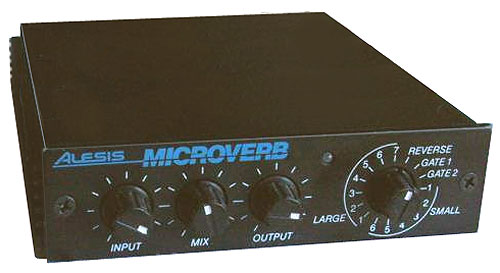
The great Micro-verb... a whole lotta reverb for peanuts money... ...
Roland RE-201
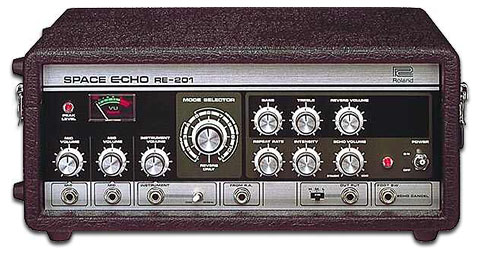
The classic Roland Space Echo...
Drawmer LX20

The Drawmer LX20 soft-knee stereo compressor is one of the first budget comp's you can look at getting. Hundreds of thousands of budget (& bigger) studio's have an LX20 in the rack so check one out. ...
Roland SRV-2000

The great Roland SRV-2000 Rolands first dig' reverb, a great cheap s/h classic for that retro 80's reverb sound. ...
Alesis 3630

Named after Alesis's street address at the time, the Alesis 3630 lays claim to be the most popular compressor of all time. The Alesis 3060 is a versatile unit offering stereo or two mono compressor...
EMT 250

EMT reverb, the 250, a monster classic!... check it out. ...
Urei LA3A
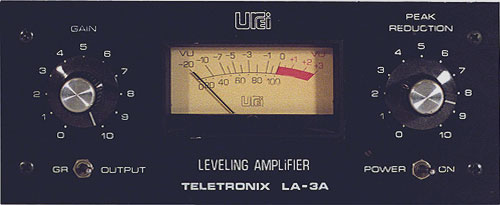
LA3A is a classic vintage compressor from Urei. ...
Yamaha SPX90

The famous yamaha SPX90 MK1, the multi-fx unit that launched a thousand multi-fx units. A total classic still used today.. loads of fx, delays, gating & compression etc with an excellent useful reverb...
Drawmer DL 241

DRAWMER DL 241 Dual auto-Compressor Gate ...
Drawmer DS201

The original frequency concious gate from Drawmer....
DBX 160
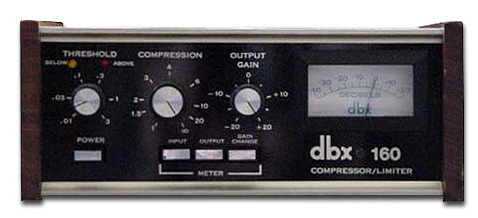
the classic dbx 160 ...
Teletronix LA2A
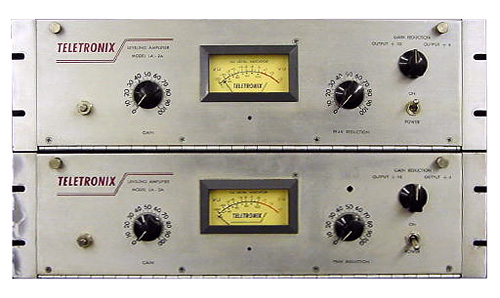
the classic LA2A originaly from Teletronix. (re-issue by UA) ...
AMS RMX16

Classic AMS reverb ...
EMT 140
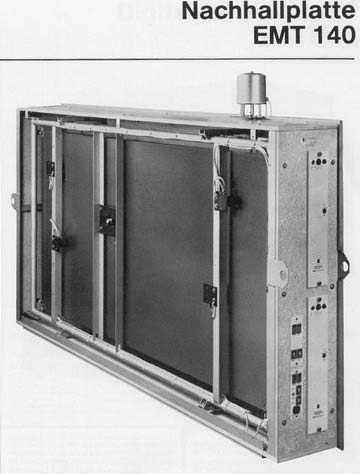
EMT plate reverb. ...
Urei 1176

Classic old skool compressor. ...
dancetech
&
thomann
partner store
Help support the site & the users music space - Buy via our partner store for EU customers. One fixed price delivery for most items!
HOT DEALS this month at Thomann!
behringer - fx2000 3d fx processor
€ 119.00 - £106.56
behringer - mdx2600 v2
€ 115.00 - £102.98
dbx - 166 xs
€ 144.00 - £128.95
dbx - 166 xs
€ 144.00 - £128.95
dbx - 215s
€ 117.00 - £104.77
dbx - driverack pa2
€ 398.00 - £356.42

fmr audio - rnc 1773
€ 211.00 - £188.95
klark teknik - 76-kt
€ 222.00 - £198.81
lexicon - pcm96 surround d
€ 3,699.00 - £3,312.60

roland - vt-4
€ 211.00 - £188.95

roland - vt-4
€ 211.00 - £188.95
ssl - fusion
€ 1,999.00 - £1,790.18
tascam - ta-1vp
€ 348.00 - £311.64
tc electronic - m100
€ 89.00 - £79.70
tc electronic - m100
€ 89.00 - £79.70
tc electronic - m350
€ 169.00 - £151.34
tc electronic - m350 b-stock
€ 156.00 - £139.70

tc-helicon - voicetone r1
€ 89.00 - £79.70

tc-helicon - voicetone t1
€ 89.00 - £79.70
the t.racks - achat dsp 24
€ 222.00 - £198.81
the t.racks - dl 2/918 delay line controller
€ 144.00 - £128.95
the t.racks - ds 2/4
€ 173.00 - £154.92
the t.racks - ds 2/4
€ 173.00 - £154.92
the t.racks - dsp 204
€ 215.00 - £192.54
the t.racks - dsp 206
€ 249.00 - £222.98
the t.racks - dsp 408
€ 479.00 - £428.96

the t.racks - dsp 4x4 mini
€ 77.00 - £68.95
the t.racks - fir dsp 408
€ 577.00 - £516.72
